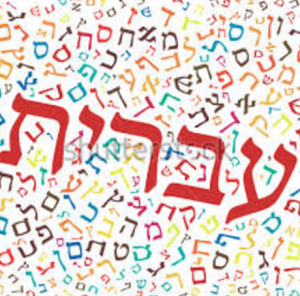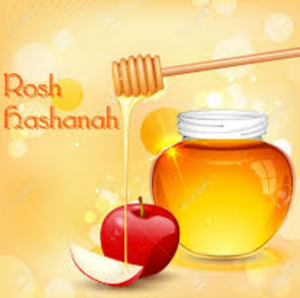The long awaited Avi Chai Foundation Hebrew report, Hebrew For What? Hebrew at the Heart of Jewish Day Schools, was released this month, and is enjoying broad discussion and commentary among Hebrew educators and administrators.
While I read it closely and with great interest, I was left scratching my head, surprised both by its content, and by what failed to make its way into the hefty 64-page volume.
On this Pesach 5777, our season of fundamental questions, let’s start with the report’s Executive Summary, which, right off the bat, outlines some of my concerns. As the summary opens, its researcher/authors lament the difficult and complex task of teaching Hebrew, due to the multiple purposes that the Hebrew curriculum serves (studying both classical sacred texts, and acquiring modern Hebrew communication skills) in a day school setting. The authors seem to be seeking readers’ leniency by describing a nearly impossible feat, relating that Hebrew faculty is hard to find; instructional minutes are hard to come by; parental demands add stress; maintaining older students’ interest is challenging; and my personal favorite, the non-Romanized alphabet makes Hebrew harder to learn than other commonly taught world languages, such as Spanish and French.
Before we continue, I say we need to come to some common understanding about what it is we are trying to accomplish with Hebrew in the day school classroom, refine and articulate our goals regarding Hebrew instruction, and align our teaching with our goals. I believe that a better handle on Second Languages Acquisition (SLA) research, which is, lamentably, all but absent from the Avi Chai report, will aid our grasp of the issues above, and how to address them.
Big Idea #1: Humans acquire language one way only – by understanding messages (Chomsky/Krashen). If we want our students to acquire Hebrew for any purpose, sacred or secular, conversational or literary, then we must begin by delivering comprehensible input, aural/oral and written messages that they can understand and that are so compelling that they attend to them effortlessly and automatically.
The Avi Chai report researchers uncover a curious trend in their surveys. The day school kids, they report, seem to be losing their Hebrew ability after fifth grade! Interestingly, this deterioration of skill in not found elsewhere in the literature among students of other languages, nor is the Hebrew phenomenon explained in the report within any SLA framework. So I offer these fundamental questions:
Could it be that after 5th grade, many Hebrew programs shift from a more experiential, conversational, compelling comprehensible input (CCI)-rich communicative model, to a high-stakes grammar and vocabulary-heavy memorize-and-test grind (unsupported by any SLA research)?
Could it be that after 5th grade, Hebrew is no longer used as the lingua franca of the classroom, but that upper level teachers talk (in English) about how Hebrew’s grammar and syntax, morphology and phonology work? Such a focus on the surface of the language in lieu of language as a tool for communication is also unsupported by any of the best-practice research, and would come at the expense of CCI and its attendant student comfort and engagement. As the amount of CCI, overall program interest and therefore quality decline, so do student outcomes.
Could it be that some programs abandon communicating in modern Hebrew altogether after 5th grade, instead shifting their limited instructional minutes to classical sacred texts – using mostly English? This possibility would most certainly render the class less conducive to Hebrew language acquisition.
Recommendations: Create and defend an early start-long sequence modern Hebrew language program, rich in CCI, that broadens students’ linguistic foundation from year to year. Insure that the content is compelling by incorporating student interests and ideas. Integrate lots more reading into the program from an early age, with literacy materials connected to and based on the acquired aural/oral language. Reading compounds language gains, and can be leveraged for the study of sacred texts. The handicap of a non-Romanized alphabet can be overcome if students are exposed to appropriate reading materials over the long haul. Protect the time dedicated to modern Hebrew instruction; it is different from sacred text study, and should not be substituted at the beginner-to-intermediate levels. Educate faculty, parents and students about your new (department-wide!) approach. Demonstrate CCI lessons at go-to-school-night, which is sure to create a buzz. Parents will be more likely to support you if their children are happy and successfully learning, and they understand the framework and what you’re trying to accomplish.
Watch student enthusiasm take off and soar, alongside acquisition. While face to face modern Hebrew communication will grow proportionately with the amount of quality CCI, it will not keep pace with the complex concepts, parables, allegories and commentaries contained in the Hebrew sacred texts. Either these will have to be adapted for beginner to intermediate Hebrew learners’ needs, or their study will have to take place in English, or in combination of Hebrew and English, whichever arrangement best meets the linguistic needs of the students. We cannot hope to teach beginners’ basic modern Hebrew for daily communication, and Talmud Torah as it appears in its original form, on the same day. It’s like reading a high school social studies textbook to a kindergartner! We must adapt our Hebrew texts to meet the needs of our learners, insure our students are engaged and comfortable –  NOT STRESSED OUT or made to feel inadequate. A high affective filter can be a major obstacle to language acquisition, so we must be vigilant that we aren’t freaking out our kids, or they will tune out and turn off. And researchers will conclude that they are ‘losing their Hebrew language,’ when it’s really the program, itself, that has lost its way.
NOT STRESSED OUT or made to feel inadequate. A high affective filter can be a major obstacle to language acquisition, so we must be vigilant that we aren’t freaking out our kids, or they will tune out and turn off. And researchers will conclude that they are ‘losing their Hebrew language,’ when it’s really the program, itself, that has lost its way.
If it’s not clear by now, I am advocating for two (or more) entirely separate classes: modern Hebrew, and ‘Judaics’/sacred texts. Let’s treat modern Hebrew like the secular subject it is – like Spanish or French – and inform our instruction with both the tenets of Second Language Acquisition research and the intuitive strategies that have been embraced by thousands of world language teachers over the past 20+ years. Of course we’ll apply and enjoy the strong modern Hebrew literacy skills our students develop over in their classical Judaics/Talmud & Torah classroom, where they’ll also benefit from the linguistic knowledge they’ve gained in modern Hebrew class (general vocabulary, familiar verb forms, prefixes, transition words, etc.) The sounds and meanings are already in their heads! By starting with language for meaning – modern Ivrit – we will build capacity for the more intellectual pursuit of classical text analysis by prioritizing and insuring the development of comprehension, literacy skills, interest and confidence.
Big Idea #2: Listening comprehension and reading, the receptive/input skills, precede writing and speaking, the productive/output skills (Read this blog post).
 But they are, regrettably, also killing student (and teacher) interest and engagement, because the set curriculum is…OK I’ll say it: mind-numbingly boring. Set curricula often ‘covers’ static and humorless topics about which the students are not interested or passionate; nor do many of the themes incorporate the highest frequency words for greatest linguistic coverage.
But they are, regrettably, also killing student (and teacher) interest and engagement, because the set curriculum is…OK I’ll say it: mind-numbingly boring. Set curricula often ‘covers’ static and humorless topics about which the students are not interested or passionate; nor do many of the themes incorporate the highest frequency words for greatest linguistic coverage.




 *Elementary Pre-K to 2nd grade & 3rd to 5th grade sub-groups
*Elementary Pre-K to 2nd grade & 3rd to 5th grade sub-groups I sent this letter of invitation below, explaining my Hebrew educational reform project to family, friends, acquaintances, teachers, administrators, and organizations. If you know anyone interested in improving the Hebrew learning (acquiring) experience and outcomes for students of all ages, please read and forward this letter!
I sent this letter of invitation below, explaining my Hebrew educational reform project to family, friends, acquaintances, teachers, administrators, and organizations. If you know anyone interested in improving the Hebrew learning (acquiring) experience and outcomes for students of all ages, please read and forward this letter! Here’s the letter to circulate, and thanks in advance for helping get the word out on improving Hebrew instruction:
Here’s the letter to circulate, and thanks in advance for helping get the word out on improving Hebrew instruction: Humans acquire languages one way only: By understanding messages, aka, Comprehensible Input (Krashen, Foreign Language Education The Easy Way).
Humans acquire languages one way only: By understanding messages, aka, Comprehensible Input (Krashen, Foreign Language Education The Easy Way). Our rich and diverse liturgical/lifecycle/holiday curricula – hereafter called religious school – explores prayers, songs, religious artifacts, images, communities (including Israel), food, customs, and some texts. Let’s discuss the texts.
Our rich and diverse liturgical/lifecycle/holiday curricula – hereafter called religious school – explores prayers, songs, religious artifacts, images, communities (including Israel), food, customs, and some texts. Let’s discuss the texts. as pre-schoolers (or even earlier these days!) with their native English.
as pre-schoolers (or even earlier these days!) with their native English. without simultaneously presenting their written Hebrew counterparts in context. But I’m not advocating for isolated word labelling, like we used to see in so many bilingual classrooms in the 80’s – 90’s. I’m talking about contextualized chunks of written Hebrew language, chunks that will be repeated orally throughout the normal course of class.
without simultaneously presenting their written Hebrew counterparts in context. But I’m not advocating for isolated word labelling, like we used to see in so many bilingual classrooms in the 80’s – 90’s. I’m talking about contextualized chunks of written Hebrew language, chunks that will be repeated orally throughout the normal course of class.
 For nearly 25 minutes we spent time in Hebrew trying to track down felafel for our hungry protagonist. First she went to Maggiano’s, our Italian venue, hungrily seeking felafel. I accompanied her across the classroom toward the Maggiano’s poster, where a Maggiano’s representative/classmate was waiting, a luscious slice of (plastic) pizza in one fist, a rubbery beige disc of coiled pasta in the other. I did the talking while my actors silently brought our drama to life. As dramatic director, I coached Leah to rub her stomach, stating that she loves felafel, while the class confirmed that no, unfortunately Maggiano’s doesn’t have felafel. It has pizza, and it has spaghetti.
For nearly 25 minutes we spent time in Hebrew trying to track down felafel for our hungry protagonist. First she went to Maggiano’s, our Italian venue, hungrily seeking felafel. I accompanied her across the classroom toward the Maggiano’s poster, where a Maggiano’s representative/classmate was waiting, a luscious slice of (plastic) pizza in one fist, a rubbery beige disc of coiled pasta in the other. I did the talking while my actors silently brought our drama to life. As dramatic director, I coached Leah to rub her stomach, stating that she loves felafel, while the class confirmed that no, unfortunately Maggiano’s doesn’t have felafel. It has pizza, and it has spaghetti.
 I wanted our kids to walk away feeling encouraged. And successful. And smiling. Those were my ‘curricular goals’ from which I decided to backwards-plan. No worries about hi-frequency structures, circling, repetitions, or the like… yet. Just a fun, informal meeting & intro with some back-and-forth Hebrew communication.
I wanted our kids to walk away feeling encouraged. And successful. And smiling. Those were my ‘curricular goals’ from which I decided to backwards-plan. No worries about hi-frequency structures, circling, repetitions, or the like… yet. Just a fun, informal meeting & intro with some back-and-forth Hebrew communication.
